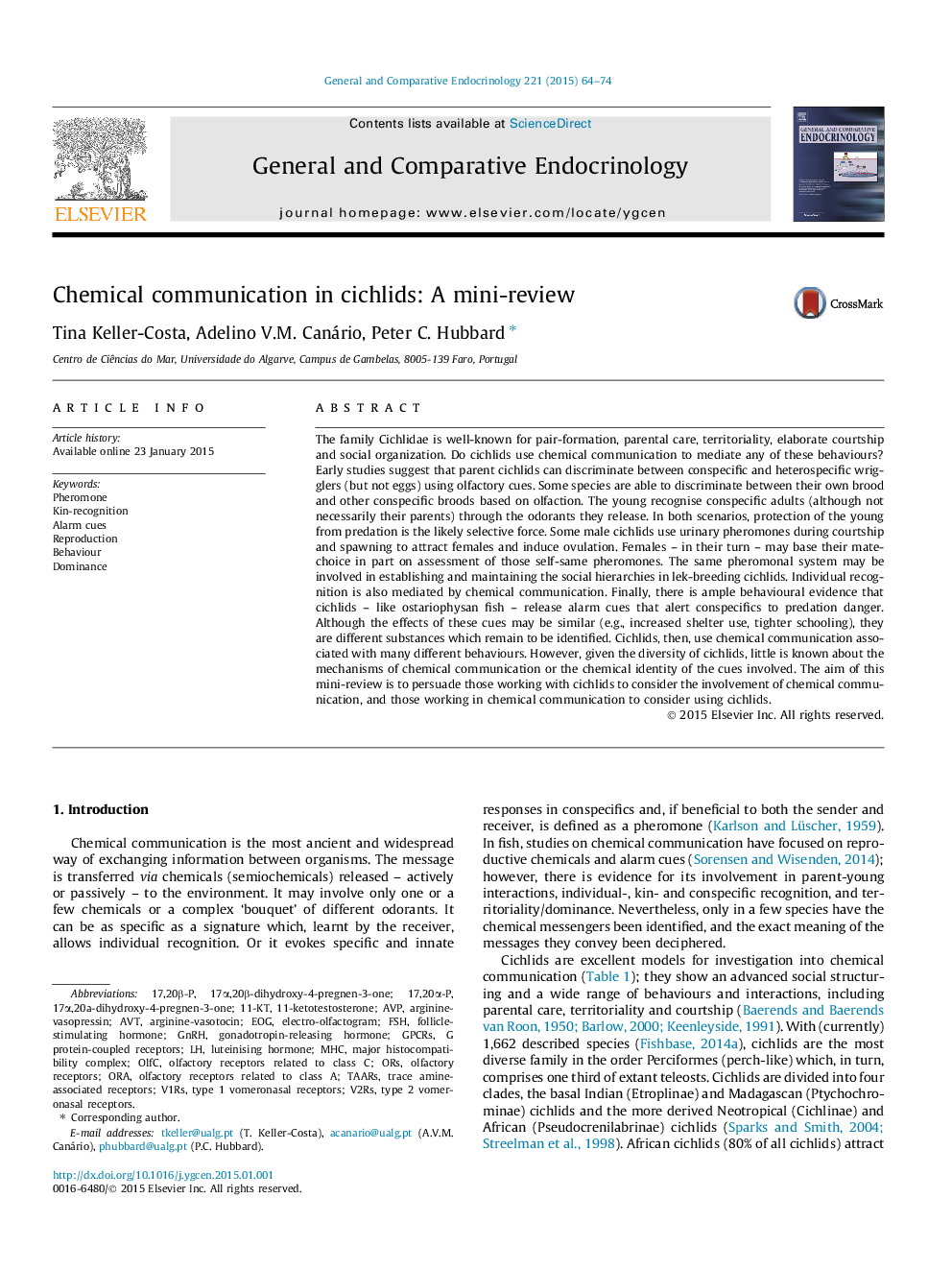| کد مقاله | کد نشریه | سال انتشار | مقاله انگلیسی | نسخه تمام متن |
|---|---|---|---|---|
| 2799907 | 1568885 | 2015 | 11 صفحه PDF | دانلود رایگان |

• Cichlids use chemical communication (CC) in many different contexts.
• Imprinting and learning seems important during parent-young chemical recognition.
• Reproductive pheromones may be important in speciation of African cichlids.
• There is evidence for disturbance- and damage-based alarm-cues in cichlids.
• Much is to be explored about the mechanisms of CC and types of chemicals involved.
The family Cichlidae is well-known for pair-formation, parental care, territoriality, elaborate courtship and social organization. Do cichlids use chemical communication to mediate any of these behaviours? Early studies suggest that parent cichlids can discriminate between conspecific and heterospecific wrigglers (but not eggs) using olfactory cues. Some species are able to discriminate between their own brood and other conspecific broods based on olfaction. The young recognise conspecific adults (although not necessarily their parents) through the odorants they release. In both scenarios, protection of the young from predation is the likely selective force. Some male cichlids use urinary pheromones during courtship and spawning to attract females and induce ovulation. Females – in their turn – may base their mate-choice in part on assessment of those self-same pheromones. The same pheromonal system may be involved in establishing and maintaining the social hierarchies in lek-breeding cichlids. Individual recognition is also mediated by chemical communication. Finally, there is ample behavioural evidence that cichlids – like ostariophysan fish – release alarm cues that alert conspecifics to predation danger. Although the effects of these cues may be similar (e.g., increased shelter use, tighter schooling), they are different substances which remain to be identified. Cichlids, then, use chemical communication associated with many different behaviours. However, given the diversity of cichlids, little is known about the mechanisms of chemical communication or the chemical identity of the cues involved. The aim of this mini-review is to persuade those working with cichlids to consider the involvement of chemical communication, and those working in chemical communication to consider using cichlids.
Journal: General and Comparative Endocrinology - Volume 221, 15 September 2015, Pages 64–74